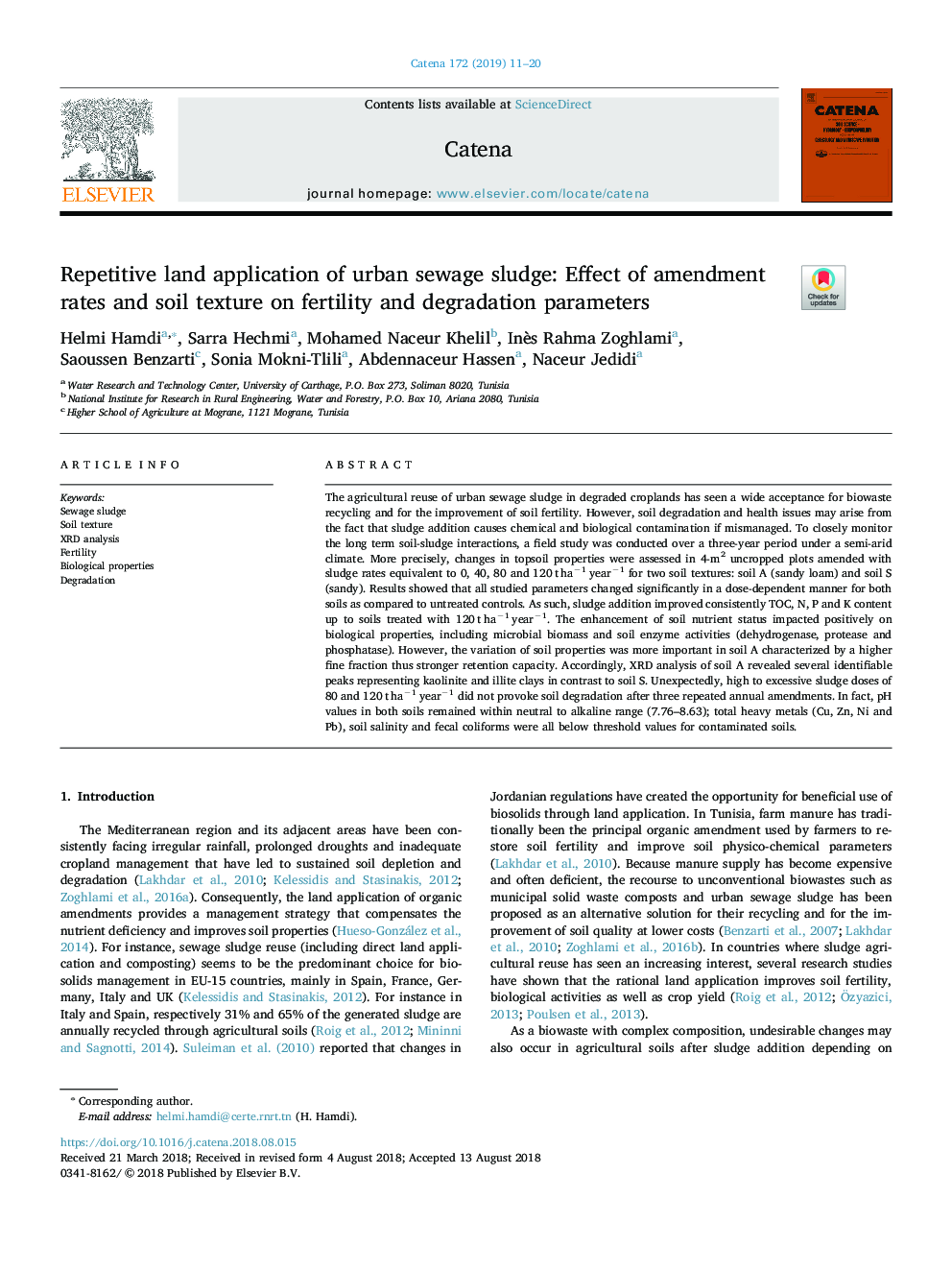| Article ID | Journal | Published Year | Pages | File Type |
|---|---|---|---|---|
| 8893311 | CATENA | 2019 | 10 Pages |
Abstract
The agricultural reuse of urban sewage sludge in degraded croplands has seen a wide acceptance for biowaste recycling and for the improvement of soil fertility. However, soil degradation and health issues may arise from the fact that sludge addition causes chemical and biological contamination if mismanaged. To closely monitor the long term soil-sludge interactions, a field study was conducted over a three-year period under a semi-arid climate. More precisely, changes in topsoil properties were assessed in 4-m2 uncropped plots amended with sludge rates equivalent to 0, 40, 80 and 120â¯tâ¯haâ1â¯yearâ1 for two soil textures: soil A (sandy loam) and soil S (sandy). Results showed that all studied parameters changed significantly in a dose-dependent manner for both soils as compared to untreated controls. As such, sludge addition improved consistently TOC, N, P and K content up to soils treated with 120â¯tâ¯haâ1â¯yearâ1. The enhancement of soil nutrient status impacted positively on biological properties, including microbial biomass and soil enzyme activities (dehydrogenase, protease and phosphatase). However, the variation of soil properties was more important in soil A characterized by a higher fine fraction thus stronger retention capacity. Accordingly, XRD analysis of soil A revealed several identifiable peaks representing kaolinite and illite clays in contrast to soil S. Unexpectedly, high to excessive sludge doses of 80 and 120â¯tâ¯haâ1â¯yearâ1 did not provoke soil degradation after three repeated annual amendments. In fact, pH values in both soils remained within neutral to alkaline range (7.76-8.63); total heavy metals (Cu, Zn, Ni and Pb), soil salinity and fecal coliforms were all below threshold values for contaminated soils.
Related Topics
Physical Sciences and Engineering
Earth and Planetary Sciences
Earth-Surface Processes
Authors
Helmi Hamdi, Sarra Hechmi, Mohamed Naceur Khelil, Inès Rahma Zoghlami, Saoussen Benzarti, Sonia Mokni-Tlili, Abdennaceur Hassen, Naceur Jedidi,
